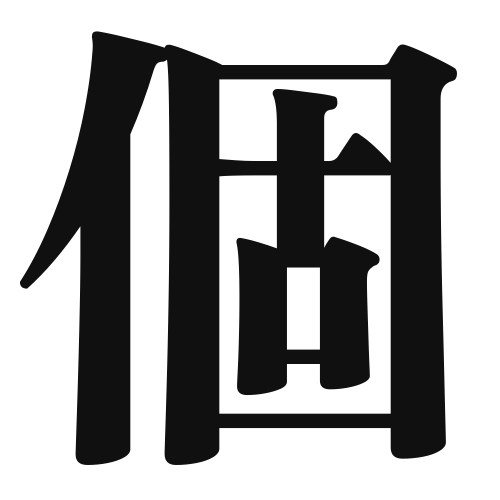1. Overview of Meaning
The kanji 個 (ko) primarily means “individual” or “single.” It is often used to refer to a single unit of something, emphasizing individuality or separateness.
2. Formation and Radical
Formation of the Kanji: The kanji 個 is a phonetic compound (形声文字) that combines the meaning of “to separate” with a phonetic component. It visually represents the concept of individuality.
Radical: The radical for 個 is 亻 (the “person” radical), which indicates that the kanji relates to people or individuals.
3. Examples of Usage
Common Words and Phrases: Some frequently used words that include 個 are:
- 個人 (kojin) – individual
- 個数 (kasu) – number of items
- 個性 (kosei) – personality
Example Sentences in Daily Conversation:
- この商品は一個だけ残っています。
(This product is available in only one piece.) - 彼は個性的な人です。
(He is a very individualistic person.)
4. Synonyms and Antonyms
Similar Kanji: A similar kanji is 単 (tan), which means “single” or “simple.” While both refer to singularity, 個 emphasizes individuality, whereas 単 focuses more on simplicity.
Opposite Kanji: The opposite kanji is 多数 (tasuu), meaning “many” or “numerous,” which indicates a collective or group rather than an individual.
5. Cultural and Historical Background
Relation to Japanese Culture: The concept of individuality represented by 個 is significant in Japanese culture, where personal identity and uniqueness are valued.
Proverbs and Idioms: An example of a related idiom is 十人十色 (juunin toiro), which means “ten people, ten colors,” highlighting the diversity of individual personalities and preferences.
